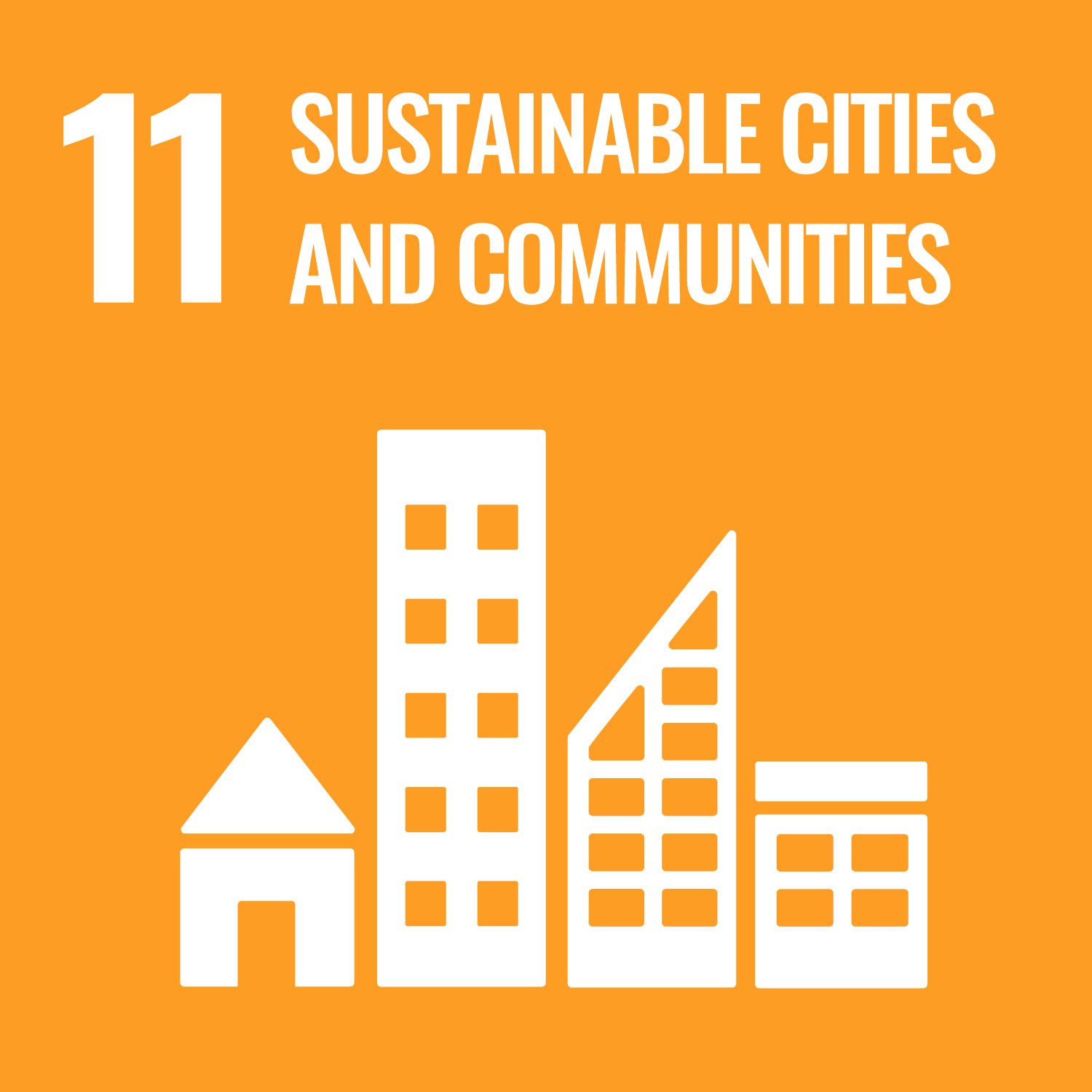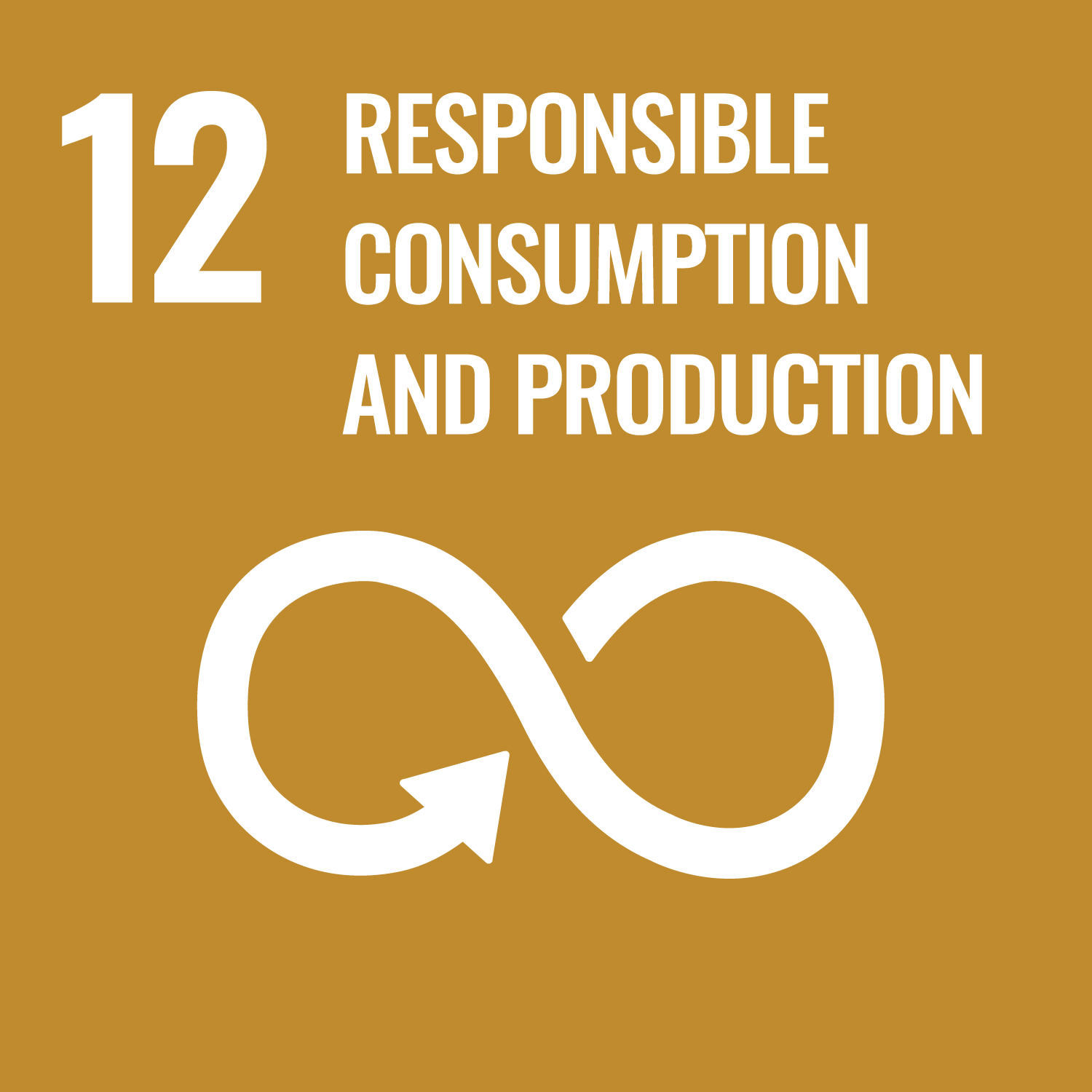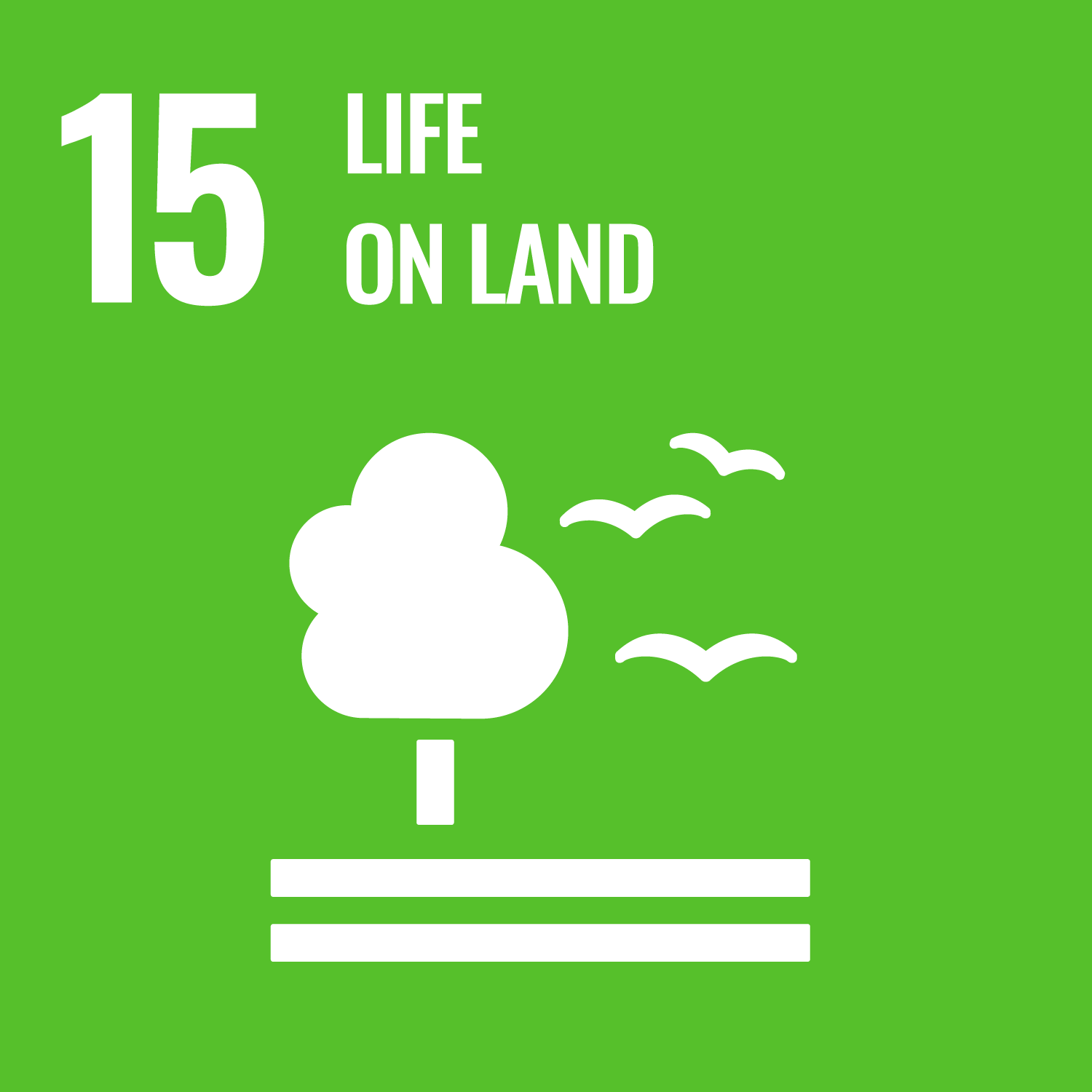Material Issue 3
To realize a circular bioeconomy by leveraging forests and wood resources
Material Issue 3
Material Issue 3
To realize a circular bioeconomy by leveraging forests and wood resources
Realizing a circular society by making the most of wood, a renewable and natural resource from the forest ecosystem.
Related SDGs



Basic Policy
Against the background of concerns about resource depletion, biodiversity loss, and environmental pollution caused by harmful substances and marine plastics, it is necessary to build a circular economy that thoroughly recycles and makes effective use of resources. Circular economy is an economic model that aims to design products and services that reduce environmental burdens such as disposal and pollution, and to continue to circulate the raw materials and products at a high level.
The Sumitomo Forestry Group engages in a wide range of businesses in Japan and overseas, including the manufacture and sale of housing construction materials, forest management, renovations, greening business, real estate development, and biomass power generation, with a focus on the detached housing business. Since various resources and materials, mainly wood, are used in each respective business activity, we need to make effective use of our resources and materials, reduce waste, and recycle. We will realize a circular bioeconomy centered on wood by running a wood cycle that cascades utilization of timber, which is a renewable and sustainable natural resource, in the forest, wood, architecture, and the field of energy such as biomass power generation and increasing the value of wood resources. For resources other than wood, we will strive to control, reuse, and recycle waste. We will also continue to investigate sustainability of our supply chain for the sustainable use of resources.
Impact on Society and the Environment
| Material Issue 3 | Impact (Opportunities) | Impact (Risks) |
|---|---|---|
| To realize a circular bioeconomy by leveraging forests and wood resources Realizing a circular society by making the most of wood, a renewable and natural resource from the forest ecosystem. |
|
|
Management of Material Issue 3 (FY2024)
In Mid-Term Sustainability Targets 2024, Material Issue 3 is divided into 18 evaluation indicators, and management is carried out by incorporating them into annual activity policies and measures of the management department. We also assess the impacts that the material issue has on society and the environment.
Reduction and Recycling of Industrial Waste
The final disposal amount of industrial waste for the Sumitomo Forestry Group was 19,971 tons in fiscal 2024, representing a 5.1% decrease compared to fiscal 2021. Although it did not reach the fiscal 2024 plan of 19,905 tons (a 5.4% decrease compared to fiscal 2021), it decreased compared to fiscal 2023. The main factor for the increase was the addition of new consolidated subsidiaries.
Total amount of industrial waste discharged (kg / building) was 2,479 kg, an increase of 12 kg compared to 2,467 kg in fiscal 2023, but it remained below the fiscal 2024 target of 2,511 kg. While the rate of decline in emissions has been gradual due to the increased use of pre-cut panels and roof slate, the progress of new measures such as pre-cutting siding and switching to the use of reused curing materials contributed to the reduction of emissions. In fiscal 2024, we will work to further reduce waste at sites by pre-cutting feather pattern materials, ordering appropriate quantities of unprocessed materials, and considering the reuse of tarps. From fiscal 2025 onward, we will continue to work on further waste reduction by expanding the coverage area for precutting siding.
Sumitomo Forestry's recycling rate at new housing construction sites was 95.1%, falling short of the fiscal 2024 plan of 98.0%, but maintaining the same level as fiscal 2023. The main factors were the improvement in the recycling rate due to the progress in precutting siding, which has a low recycling rate, and the reduction of mixed waste from 4.3% to 3.9% thanks to thorough waste separation at construction sites. Additionally, changing to recyclable contractors in the processing flow under the wide-area certification also contributed to the improvement.
In "Mid-Term Sustainability Targets Phase 2 (2025–2027)," we will continue to reduce the rate of mixed waste through thorough separation at each site, aiming to further improve the recycling rate.
Results
Ratings in the table below
Achieved: ◯ Not achieved but improved from previous year: △ Not achieved and declined compared to previous year: ✕
| Indicators for Evaluation | Managing department | FY2024 target |
FY2024 result |
FY2024 value |
FY2025 target |
|---|---|---|---|---|---|
|
Final disposal amount (t) consolidated
Percentage change from fiscal 2021 |
Sustainability Department | 19,905 -5.4 |
19,971 -5.1 |
△ | 22,213 (Down 7% from FY12/23) |
| Recycling rate at new housing construction sites*1(%) | Housing Division | 98.0 | 95.1 | △ | 96.3 |
| Recycling rate at housing demolition sites*2(%) | 100 | 100 | 〇 | - | |
| Recycling rate at the work sites of the renovation business unit*3(%) | 85.5 | 84.8 | △ | - | |
| Recycling rate at the work sites of the power generation business unit (%) | Environment and Resources Division | 98.0 | 96.8 | △ | 97.0 |
| Recycling rate at overseas manufacturing plants (%) | Timber and Building Materials Division | 99.0 | 98.4 | △ | 99.0 |
| Recycling rate at domestic manufacturing plants (%) | 99.0 | 99.1 | 〇 | 99.6 | |
| Other recycling rate (%) |
Timber and Building Materials Division
Lifestyle Service Division Tsukuba Research Institute |
86.0 | 83.8 | △ | - |
| Sustainable timber usage ratio (Overall manufacturing) (%) | Timber and Building Materials Division | 100 | 98.6 | ✕ | 100 |
| Total amount of industrial waste discharged from all branches (kg / building)*4 | Housing Division | 2,511 | 2,479 | 〇 | - |
| Discharge amount of newly built industrial waste (kg/m2) | 19.8 | 19.7 | 〇 | 19.2 |
*1Includes new housing construction sites of the Housing and Construction Division, Sumitomo Forestry Landscaping, as well as Sumitomo Forestry Home Engineering
*2Includes specific construction materials (concrete, asphalt-concrete, and wood waste) under the Construction Material Recycling Law
*3Includes Sumitomo Forestry Home Tech renovation sites but excludes hard-to-recycle debris and asbestos
*4Excludes Construction Business Sub-Division
- Click here for related information
Reduction of Water Consumption
The Sumitomo Forestry Group’s total water consumption in fiscal 2024 was 2,939,000 m3, exceeding the plan of 2,777,000 m3 by 162,000 m3, and also exceeding fiscal 2023’s 2,916,000 m3 by 23,000 m3. The main reasons for the increase in fiscal 2024 were the installation of sprinkling equipment to improve working conditions at overseas manufacturing plants, increased sprinkler irrigation at domestically managed golf courses due to lower summer rainfall, and increased watering of plants within parks managed under contract. Regarding the reduction of water usage, we will continue to manage targets under the "Mid-Term Sustainability Targets Phase 2 (2025–2027)" and will also establish new targets for intensity metrics to advance efforts toward reduction.
Results
Ratings in the table below
Achieved: ◯ Not achieved but improved from previous year: △ Not achieved and declined compared to previous year: ✕
| Indicators for Evaluation | Managing department | FY2024 target |
FY2024 result |
FY2024 value |
FY2025 target |
|---|---|---|---|---|---|
| Water consumption (m3) (consolidated) |
All Sumitomo Forestry Group Companies | 2,777,269 | 2,939,316 | ✕ | 2,971,001 |
- Click here for related information
Management of the Supply Chain
With regard to the "Sustainability procurement survey implementation rate in the supply chain" in the domestic detached houses division, which began in fiscal 2019, we have conducted surveys for more than 90% of our suppliers in terms of material purchases, and we maintained this status in fiscal 2024. Survey results are improving, and the main reasons were to promote understanding of the ESG survey, and the suppliers made efforts based on the feedback from the previous result. Similarly, the domestic distribution department of the Timber and Building Materials Business Division has been conducting the same survey of suppliers since fiscal 2022, and the response rate for fiscal 2024 was 87.0% compared to the target of 90%.
The number of companies to which we actively proposed acquiring EPD* certification to suppliers was 146 (70.4% of total purchases), exceeding the plan of 65 companies (71.0% of total purchases).
Currently, Sumitomo Forestry is marketing and providing the Japanese version of "One Click LCA," software that visualizes CO2 emissions and other environmental impacts of buildings. We will continue to actively utilize this software and provide training and application support for EPD acquisition in order to market and promote the EPD product.
In addition to continuing to resubmit proposals to wood building material manufacturers and other existing contacts, we will pursue new business development by making proposals to new manufacturers introduced or requested by general contractors and through web searches. Additionally, we plan to actively promote EPD acquisition proposals by utilizing subsidy programs related to EPD acquisition implemented by the Ministry of Land, Infrastructure, Transport and Tourism.
*Abbreviation of Environmental Product Declaration. An ISO-compliant environmental labeling system that visualizes various environmental impacts, including CO2 emissions, across the entire product life cycle from raw material procurement to disposal
Results
Ratings in the table below
Achieved: ◯ Not achieved but improved from previous year: △ Not achieved and declined compared to previous year: ✕
| Indicators for Evaluation | Managing department | FY2024 target |
FY2024 result |
FY2024 value |
FY2025 target |
|---|---|---|---|---|---|
| Sustainability procurement survey implementation rate in the supply chain of the domestic housing department(%) | Housing Division | 97.0 | 98.0 | 〇 | - |
| Certification acquisition rate of incoming PKS (%) | Environment and Resources Division | 100 | 100 | 〇 | 100 |
| Average score rate of "tier 1 suppliers" in ESG Survey | Housing Division | Improvement as compared to previous year |
Improvement as compared to previous year |
〇 | - |
| Number of EPD acquisition proposals to suppliers (company) Ratio (%) | Timber and Building Materials Division | 65 71.0 |
146 70.4 |
〇 △ |
- |
| Sustainability survey response rate to suppliers (sales ratio) (%) | 90.0 | 87.0 | △ | - |
- Click here for related information
Utilization of Unused Resources
The volume of unused forest resources handled for biomass fuel and other uses in fiscal 2024 was 5,547 m3, a decrease of 17,048 m3 compared to the 22,595 m3 in fiscal 2023, and significantly below the fiscal 2024 plan of 19,202 m3. This was mainly due to the suspension of company-owned forest operations following the cancellation of the forest management plan certification. In addition to conducting a root cause analysis and formulating recurrence prevention measures, we have newly submitted a certification application and obtained forest management plan certification in June 2024. We plan to increase the volume handled from fiscal 2025 onward.
Results
Ratings in the table below
Achieved: ◯ Not achieved but improved from previous year: △ Not achieved and declined compared to previous year: ✕
| Indicators for Evaluation | Managing department | FY2024 target |
FY2024 result |
FY2024 value |
FY2025 target |
|---|---|---|---|---|---|
| Unused resources (biomass use) handling volume (m3) | Environment and Resources Division | 19,202 | 5,547 | ✕ | 12,795 |
- Click here for related information
Mid-Term Sustainability Targets Phase 2 (2025–2027)
Management of Material Issue 3
In "Mid-Term Sustainability Targets Phase 2 (2025–2027)," Material Issue 3 is divided into three main categories, and management is carried out by incorporating them into annual activity policies and measures of the management departments.
Reduction and Recycling of Industrial Waste
| Indicators for Evaluation | Managing department | FY2024 result |
FY2025 target |
FY2026 target |
FY2027 target |
|---|---|---|---|---|---|
|
Final disposal amount (t) consolidated
Percentage change from fiscal 2023 |
Sustainability Department | - | 22,213 | 21,735 | 21,018 |
| -7% | -9% | -12% | |||
| Discharge Amount of Newly Built Industrial Waste (Detached Houses Only) (kg/m2) | Housing Division | 95.1 | 19.2 | 19.0 | 18.8 |
| Recycling Rate of Industrial Waste from New Housing Construction (%) | - | 96.3 | 96.6 | 96.8 | |
| Recycling rate at housing demolition sites (%) | - | 100 | 100 | 100 | |
| Recycling rate at the work sites of the renovation business unit (%) | - | 85.5 | 85.5 | 85.5 | |
| Recycling rate at the work sites of the power generation business unit (%) | Environment and Resources Division | 96.8 | 97.0 | 97.5 | 97.5 |
| Recycling rate at overseas manufacturing plants (%) | Timber and Building Materials Division | 98.4 | 99.0 | 99.0 | 99.0 |
| Recycling rate at domestic manufacturing plants (%) | 99.1 | 99.6 | 99.6 | 99.6 |
Reduction of Water Consumption
| Indicators for Evaluation | Managing department | FY2024 result |
FY2025 target |
FY2026 target |
FY2027 target |
|
|---|---|---|---|---|---|---|
| Water consumption (m3) | All Sumitomo Forestry Group Companies | 2,939,316 | 2,971,001 | 2,972,632 | 2,989,957 | |
| Unit Water Consumption (m3) | Water Withdrawal per Net Sales (m3 per ¥1 million) | - | 1.22 | 1.09 | 0.98 | |
| Nature / Water | Percentage of Delivered Homes Certified as Zero Energy Ready Homes (%) (North America) | Global Construction and Real Estate Division | - | 100 | 100 | 100 |
| Percentage of Water-Related Fixtures Certified under WaterSense (%) (North America) | - | 100 | 100 | 100 | ||
| Adoption Rate of Water-Saving Toilets in New Houses* (Specified Products Only) (%) | Detached Houses | Housing Division | - | 100 | 100 | 100 |
| Subdivided Housing | - | 100 | 100 | 100 | ||
*JIS Classification Type II or lower (water usage 6.5 liters or less)
Management of the Supply Chain
| Indicators for Evaluation | Managing department | FY2024 result |
FY2025 target |
FY2026 target |
FY2027 target |
|
|---|---|---|---|---|---|---|
| Percentage of Sustainable Timber Used in Custom-Built Detached Houses (Primary Building Material) (%) | Housing Division | - | 100 | 100 | 100 | |
| Rate of Sustainability Procurement Surveys Conducted | Percentage of Companies that Grasp Their Greenhouse Gas (GHG) Emissions (%) | Timber and Building Materials Division | - | 38.0 | 39.0 | 40.0 |
| Percentage of Companies with Greenhouse Gas (GHG) Emission Reduction Plans (%) | - | 27.0 | 28.0 | 30.0 | ||
| [New Detached Houses] Percentage of Suppliers that Grasp Their GHG Emissions | Housing Division | - | Improvement as compared to previous year |
Improvement as compared to previous year |
Improvement as compared to previous year |
|
| [New Detached Houses] Percentage of Suppliers with GHG Emission Reduction Plans | - | Improvement as compared to previous year |
Improvement as compared to previous year |
Improvement as compared to previous year |
||

